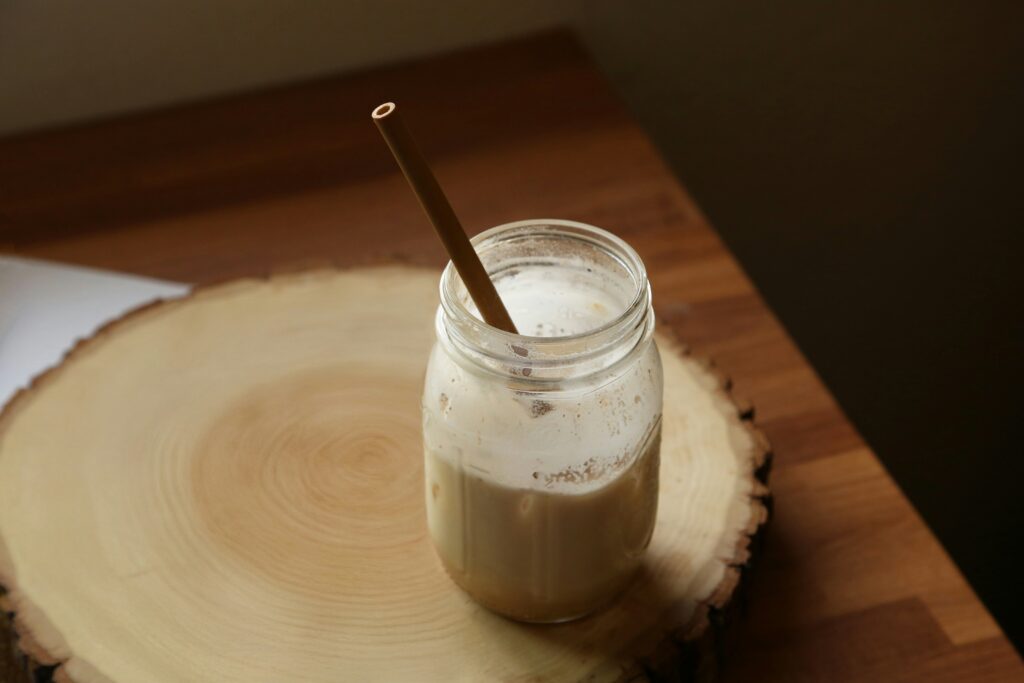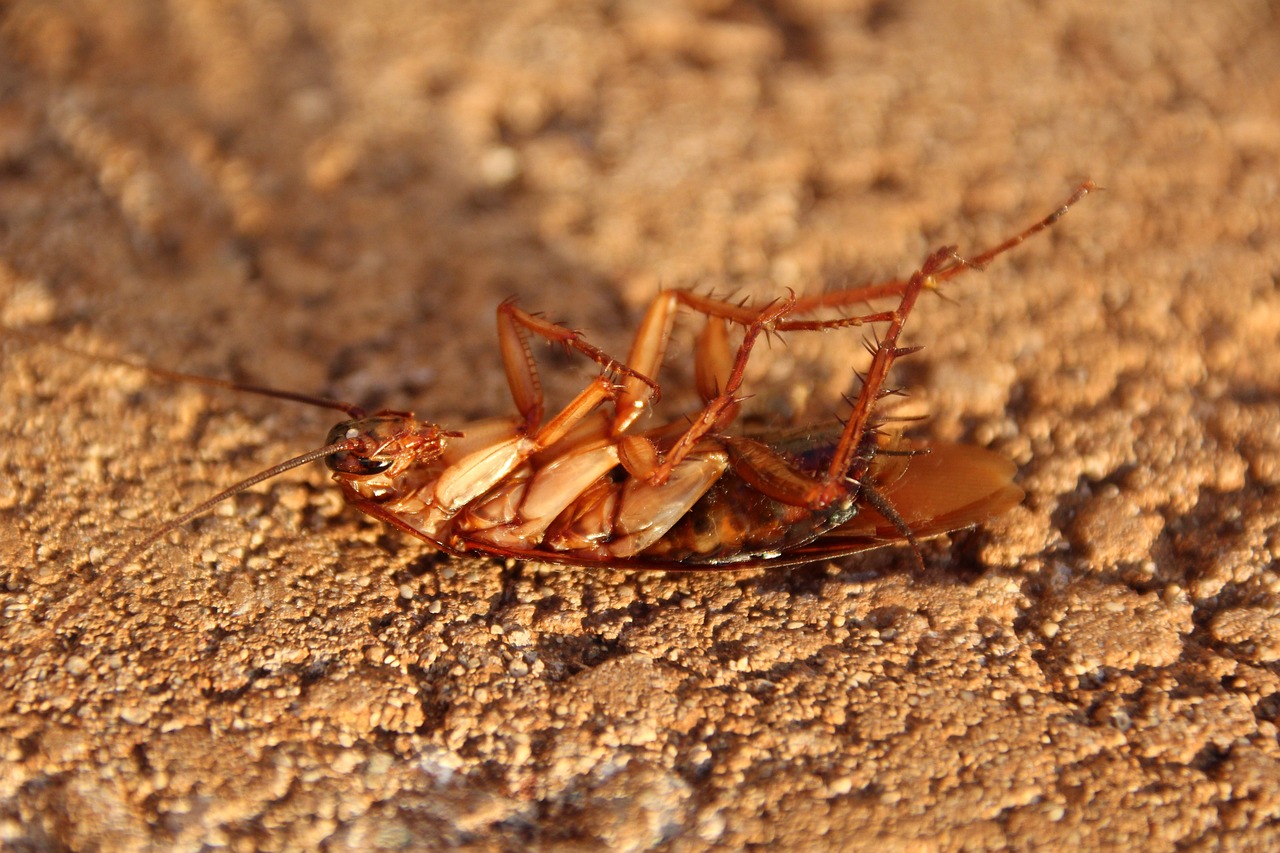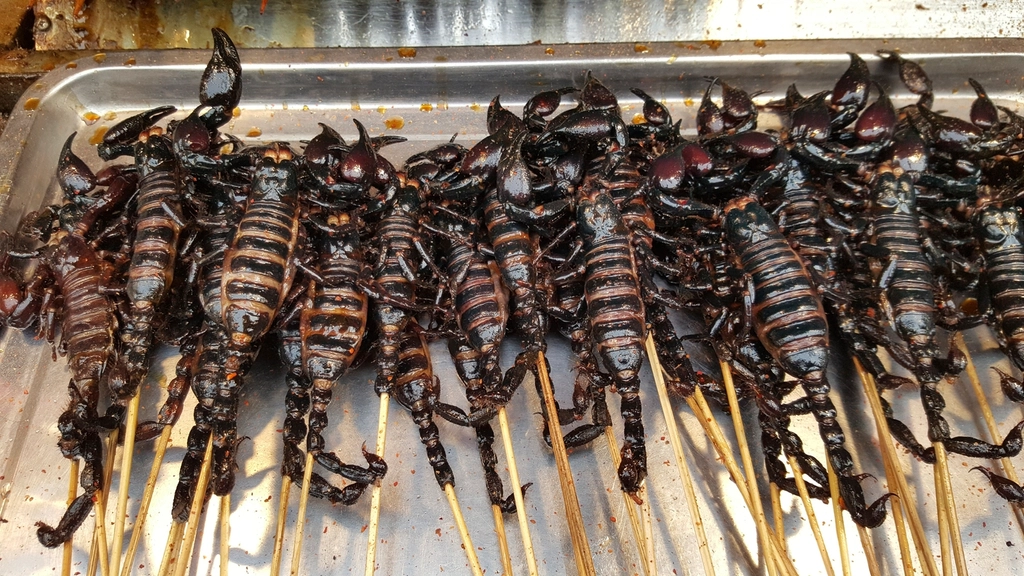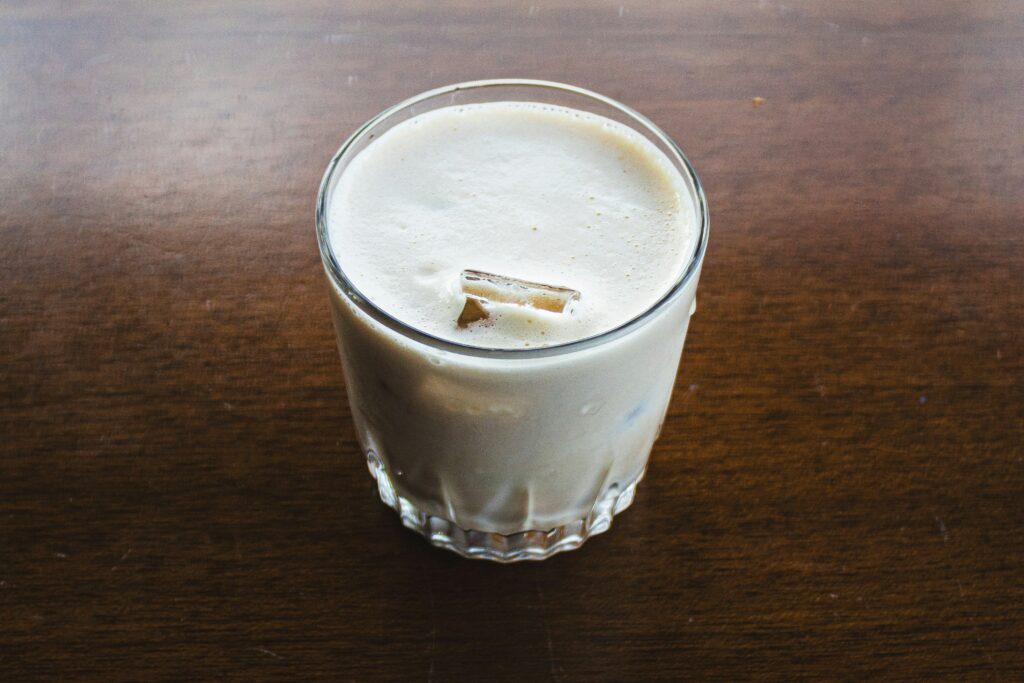Picture this: you’re sitting at a trendy health food café, sipping your morning latte when someone at the next table orders a “cockroach milk smoothie.” Your stomach churns, but hold on – this isn’t some Fear Factor challenge gone wrong. Scientists have discovered that these creepy crawlers produce one of the most nutritionally dense substances on Earth, and it might just revolutionize how we think about food forever.
The Shocking Discovery That Started It All
Back in 2016, researchers at the Institute for Stem Cell Biology and Regenerative Medicine in India made a discovery that would make headlines worldwide. They weren’t studying cockroaches to find new ways to eliminate them from our kitchens – they were investigating how certain species feed their young.
What they found was mind-blowing: the Pacific beetle cockroach (Diploptera punctata) doesn’t just abandon its offspring like most insects. Instead, it produces a protein-rich crystal that serves as complete nutrition for developing babies. This crystal contained more calories than buffalo milk and packed a nutritional punch that left scientists scrambling to understand its potential.
Meet the Milk-Making Cockroach

The Pacific beetle cockroach isn’t your typical kitchen pest. This Hawaiian native is one of the few cockroach species that gives birth to live young instead of laying eggs. The mother essentially “breastfeeds” her babies through protein crystals that form in her gut.
These crystals aren’t like anything found in nature. They’re perfectly structured protein complexes that contain essential amino acids, fats, and sugars – basically everything a growing organism needs to thrive. Think of it as nature’s version of a perfectly balanced protein shake, just in crystal form.
The Nutritional Powerhouse That Beats Cow’s Milk
Here’s where things get really interesting: cockroach milk contains three times more energy than buffalo milk, which is already considered one of the richest animal milks available. A single crystal provides complete proteins with all nine essential amino acids that humans can’t produce on their own.
The nutritional profile reads like a superfood fantasy: high-quality proteins, healthy fats, carbohydrates, vitamins, and minerals all packed into microscopic crystals. It’s like someone took every supplement in a health store and compressed them into the most efficient delivery system imaginable. The only catch? It comes from cockroaches.
Scientists have compared these crystals to other protein sources, and the results are staggering. Gram for gram, cockroach milk crystals contain more protein than eggs, more energy than nuts, and a more complete amino acid profile than quinoa.
How Scientists Extract This Bizarre Superfood
You might be wondering how exactly researchers get milk from cockroaches, and the process is as fascinating as it is complex. Scientists don’t actually “milk” cockroaches like tiny cows – instead, they harvest the protein crystals from the insect’s midgut.
The extraction process involves carefully dissecting pregnant female cockroaches and removing the crystal-containing tissue. These crystals are then purified and analyzed in laboratories. It’s painstaking work that yields only tiny amounts of the precious protein.
Currently, researchers are working on ways to produce these crystals without involving actual cockroaches. They’re using genetic engineering techniques to get other organisms, like yeast or bacteria, to produce the same protein structures. It’s like teaching microorganisms to become tiny protein factories.
The Science Behind Nature’s Perfect Food
What makes cockroach milk so special isn’t just what it contains, but how it’s structured. The protein crystals are arranged in a way that allows for slow, sustained release of nutrients. When digested, they break down gradually, providing a steady stream of amino acids and energy.
This time-release mechanism is what makes the milk so efficient for baby cockroaches – and potentially revolutionary for human nutrition. Unlike regular proteins that get absorbed quickly, these crystals could provide sustained nutrition over hours. It’s like having a built-in meal replacement that keeps working long after you’ve consumed it.
The molecular structure also makes the milk incredibly stable. While regular milk spoils quickly, these protein crystals can withstand extreme temperatures and remain nutritionally intact for extended periods.
Could This Really End Up on Store Shelves?
The idea of cockroach milk hitting mainstream markets might sound like science fiction, but food technology companies are already exploring the possibilities. Several startups have invested in research to mass-produce these proteins without using actual insects.
The key lies in biotechnology – programming microorganisms to produce the same protein crystals that cockroaches make naturally. If successful, this could create a sustainable, high-protein food source that doesn’t require raising billions of cockroaches. The “ick factor” disappears when the final product comes from a lab rather than an insect.
However, regulatory hurdles remain significant. Food safety agencies worldwide will need extensive testing before approving any cockroach-derived products for human consumption. The process could take years, if it happens at all.
Environmental Benefits That Could Change Everything

Beyond nutrition, cockroach milk represents a potential solution to some of our planet’s biggest challenges. Traditional livestock farming consumes enormous amounts of water, land, and feed while producing significant greenhouse gas emissions. Cockroaches, by contrast, are incredibly efficient protein producers.
A single cockroach requires minimal resources to produce high-quality protein crystals. They eat organic waste, reproduce quickly, and have virtually no environmental footprint compared to cattle or dairy cows. If we could scale up production using biotechnology, it could revolutionize sustainable protein production.
The environmental math is compelling: producing the same amount of protein from cockroach crystals could use 99% less water and land than traditional dairy farming. For a world facing climate change and population growth, this efficiency could be game-changing.
The Taste Test Nobody Asked For
Here’s the question everyone’s dying to know: what does cockroach milk actually taste like? The few researchers who’ve been brave enough to try it describe the crystals as surprisingly bland and slightly nutty. Unlike the pungent flavors you might expect, the protein crystals are reportedly quite mild.
This neutral taste profile could actually be an advantage for food applications. Unlike strong-flavored protein sources, cockroach milk crystals could be easily incorporated into various foods without affecting taste. Think protein bars, smoothies, or baked goods with an invisible nutritional boost.
The texture is another story – the crystals are said to have a slight crunch, similar to very fine salt crystals. Some researchers suggest this could add an interesting textural element to foods, while others are working on ways to make the crystals dissolve smoothly.
Other Insects Joining the Superfood Revolution
Cockroaches aren’t the only insects producing surprising nutritional treasures. Ant larvae from certain species contain complete proteins and healthy fats that rival traditional superfoods. Some beetle larvae are packed with more iron than spinach and more calcium than milk.
The field of entomophagy – eating insects – is expanding rapidly as researchers discover the nutritional potential of various bugs. While Western cultures have been slow to embrace insect foods, over two billion people worldwide already consume insects regularly as part of their traditional diets.
What makes cockroach milk unique is its complete nutritional profile and the potential for lab-based production. Unlike whole insects, which many people find visually off-putting, cockroach milk could be processed into familiar forms that bypass the psychological barriers to insect consumption.
The Challenges of Scaling Up Production
Despite its potential, cockroach milk faces significant hurdles before reaching commercial viability. The primary challenge is scale – each cockroach produces only tiny amounts of milk crystals, making traditional harvesting methods completely impractical for mass production.
Scientists are racing to solve this problem through genetic engineering and fermentation technologies. The goal is to program fast-growing microorganisms like yeast to produce the same protein crystals in large bioreactors. This approach could potentially produce thousands of times more protein than harvesting from actual cockroaches.
Cost remains another major barrier. Current production methods are extremely expensive, making cockroach milk far more costly than any existing protein source. For the technology to succeed commercially, production costs need to drop dramatically while maintaining nutritional quality and safety standards.
Cultural Barriers and Consumer Acceptance
Perhaps the biggest challenge isn’t technical – it’s psychological. The idea of consuming anything derived from cockroaches triggers immediate disgust in most Western consumers. Even if the final product contains no actual insect material, the association alone could doom commercial prospects.
Food marketing experts suggest that successful introduction would require careful branding and education. The product might need to be marketed simply as “protein crystals” or under a completely different name that doesn’t reference its insect origins. Consumer acceptance often follows younger, health-conscious demographics who are more open to novel foods.
Cultural shifts in food acceptance can happen surprisingly quickly, though. Twenty years ago, raw fish was considered disgusting by most Americans – now sushi is mainstream. Similarly, plant-based meat alternatives overcame initial skepticism to become billion-dollar industries.
Regulatory Hurdles and Safety Concerns

Before cockroach milk can reach consumers, it must navigate complex regulatory approval processes across different countries. Food safety agencies require extensive testing to ensure any new food product is safe for human consumption, especially one derived from insects.
The regulatory pathway for insect-derived foods is still being established in many countries. European authorities have begun approving certain insects for human consumption, but the process is slow and requires comprehensive safety data. The unique nature of cockroach milk crystals means regulators have no existing framework for evaluation.
Safety testing must address potential allergenicity, toxicity, and long-term health effects. While cockroaches themselves don’t appear to pose health risks when properly processed, their milk proteins are entirely new to human diets. This novelty requires careful evaluation to ensure consumer safety.
The Future of Alternative Proteins
Cockroach milk represents just one frontier in the rapidly evolving alternative protein landscape. As global population growth strains traditional food systems, scientists are exploring increasingly creative protein sources from algae to lab-grown meat to insect derivatives.
The race to develop sustainable, nutritious protein alternatives has attracted billions in investment from food companies and venture capitalists. While cockroach milk might sound outlandish today, it could be tomorrow’s breakthrough in addressing global protein needs.
Success in this field often comes from unexpected directions. Many of today’s common foods were once considered exotic or even disgusting. Lobster was prison food in colonial America, and tomatoes were thought poisonous in Europe for centuries.
What This Means for Global Food Security
The potential impact of cockroach milk extends far beyond novelty nutrition. With climate change threatening traditional agriculture and global population expected to reach 10 billion by 2050, alternative protein sources aren’t just interesting – they’re potentially essential for human survival.
Conventional protein production is already straining planetary resources. Beef production requires 20,000 liters of water per kilogram of protein, while contributing significantly to greenhouse gas emissions. Cockroach milk production could theoretically provide equivalent nutrition with a fraction of the environmental impact.
For developing nations facing malnutrition, cheap and nutritionally complete protein sources could save millions of lives. The efficiency of cockroach milk production – if scaled successfully – could make high-quality protein accessible to populations that currently can’t afford adequate nutrition.
The Science That Still Needs to Happen

Despite promising initial research, cockroach milk remains largely theoretical as a human food source. Scientists need to solve numerous technical challenges before it becomes practical, starting with efficient production methods that don’t require actual cockroaches.
Long-term human studies are completely absent from current research. While the nutritional profile looks impressive on paper, nobody knows how human bodies actually process and utilize cockroach milk proteins over extended periods. This research could take years or even decades to complete properly.
Genetic engineering approaches show promise, but they’re still in early stages. Researchers have successfully gotten bacteria to produce similar proteins, but scaling up to industrial production levels while maintaining nutritional quality remains an unsolved challenge. The technology exists, but practical application is still years away.
The strangest foods often become tomorrow’s staples, and cockroach milk might just be the next unlikely addition to our diets. While the thought of sipping insect-derived protein might make your skin crawl today, the nutritional benefits and environmental advantages are impossible to ignore. With global food security hanging in the balance and traditional protein sources reaching their limits, perhaps it’s time to embrace the uncomfortable truth that our future meals might come from the most unexpected places. The question isn’t whether we’ll eventually need alternative proteins – it’s whether we’ll be brave enough to try them when we do.
